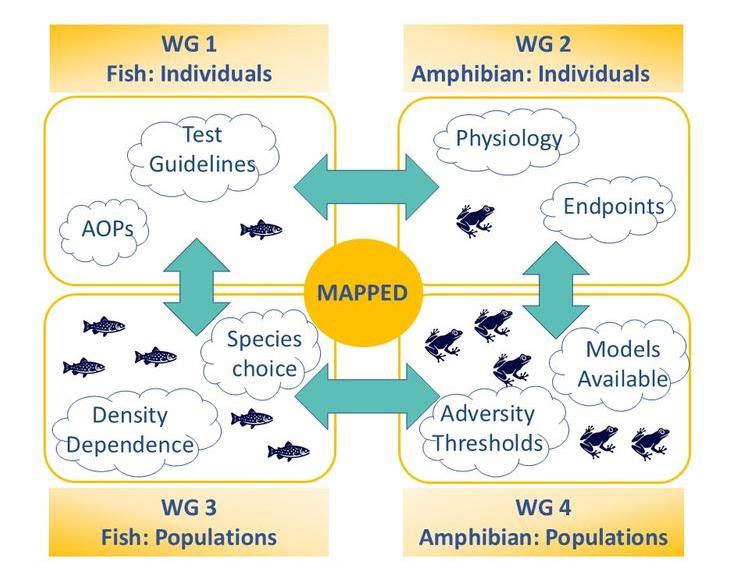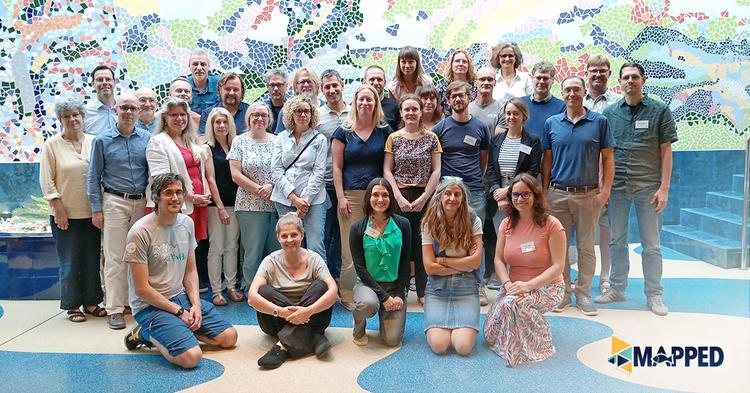Update from the Inaugural MAPPED Workshop
Charles Hazlerigg, Enviresearch Ltd.
The assessment of endocrine disruption (ED) is a requirement during the authorization process of chemicals within several regulations (e.g., Reg 1107/2009 and Reg 528/2012). The stakes cannot be higher – classification as an ED will lead to non-approval of a substance. The pressure is on industry to select non-ED substances to support through approval and on regulators to perform a thorough evaluation to protect the environment from ED chemicals, and all this is taking place within an ever-changing academic landscape where new knowledge is being generated and disseminated almost daily.
Environmental protection from ED is focused on whole populations; however, the effects data used in the Weight of Evidence are predominantly from laboratory studies on individuals, with population relevance assumed in the absence of additional information. The ECHA/EFSA (2018) Guidance document states that population modeling, field studies and monitoring studies may provide the necessary additional information, yet it is not clear how such a study would be performed. As the assessment criteria to be deemed an ED are hazard based, the usual “rules” about how to perform such studies don’t apply.
To address this challenge, knight-errant scientists from across Europe and North America were summoned to Barcelona from 9–12 September. For many, the challenge began long before they arrived. The steering committee had spent more than 18 months in planning, while travelers, lured by the promise of Barcelona’s blue-sky idyll, met with ferocious thunderstorms instead, which did their best to waylay flights well into the night. So it was commendable that all participants swiftly engaged in thoughtful, stimulating discussions right from the start of the workshop.
The workshop began with a number of plenary sessions designed to bring everyone together on the topic at hand. These sessions covered introductory talks on regulations, amphibian and fish testing, and modeling, building up to the presentation of the eight charge questions participants would tackle and, finally, the (much anticipated) reveal of each participant‘s breakout group assignment. Participants then spent most of the workshop in one of four breakout groups: Fish (individual), fish (population), amphibian (individual) and amphibian (population), with occasional reporting back to the whole group.

An early victory to the cause was dealing with charge question six, “Even if exposure is not explicitly modelled, what duration should be assumed for the effect in question.” Quickly and unanimously, the participants agreed that this was unnecessary given we were dealing with a hazard assessment and therefore, no toxicity module would be required within a population model, and any effect on an individual would be a permanent state; however, we continued to be on our guard with rebellious murmurings about exposure having to be decisively dealt with throughout the workshop. This was not a conscious effort by the participants to derail proceedings but rather a reflection of the struggle to think in a way so contrary to the concept of risk and the traditional dose–response relationship that underpinned the teachings of many ecotoxicologists.
Meanwhile, other aspects were even more challenging. It takes time for groups of interested, knowledgeable and enthusiastic individuals (who in many cases had limited previous contact with each other) to develop into a team. The need to discuss difficult questions within groups, as well as think about consistency and challenges across taxonomic boundaries and levels of biological organization between groups, also required time. The immersive nature of the workshop, full days with group dinners into the evenings across 3.5 days, provided the necessary time for these teams to learn to work together and for ideas to mature for the next steps. A shorter duration would not have been as fruitful.
The aim of this first workshop was not to answer all open questions and go home completely fulfilled, but rather to spark discussions and identify the most relevant aspects we need to address to achieve our goals. To this end, each of the breakout groups formulated a series of actions that they would pursue after the workshop in the “homework” period (even adults cannot escape homework!). This work has now begun, with a second in-person workshop in the plans for June 2025. After the second workshop, the outputs will be compiled and disseminated to the wider community. So if you are interested in the topic, please keep your eyes open in a year’s time for a follow-up article!

Author’s contact: [email protected]
